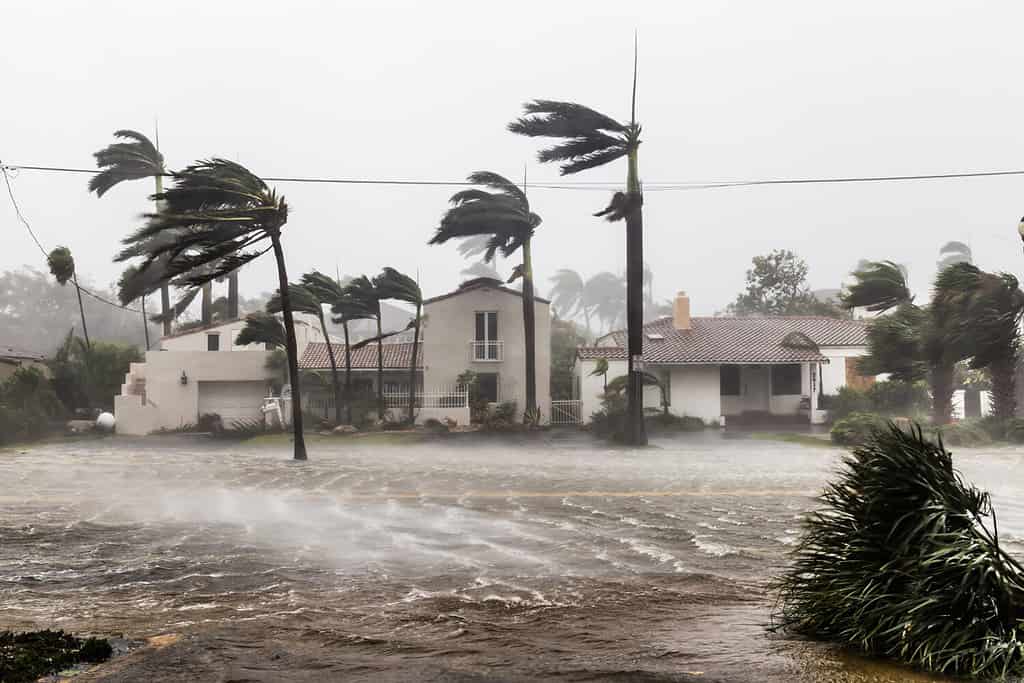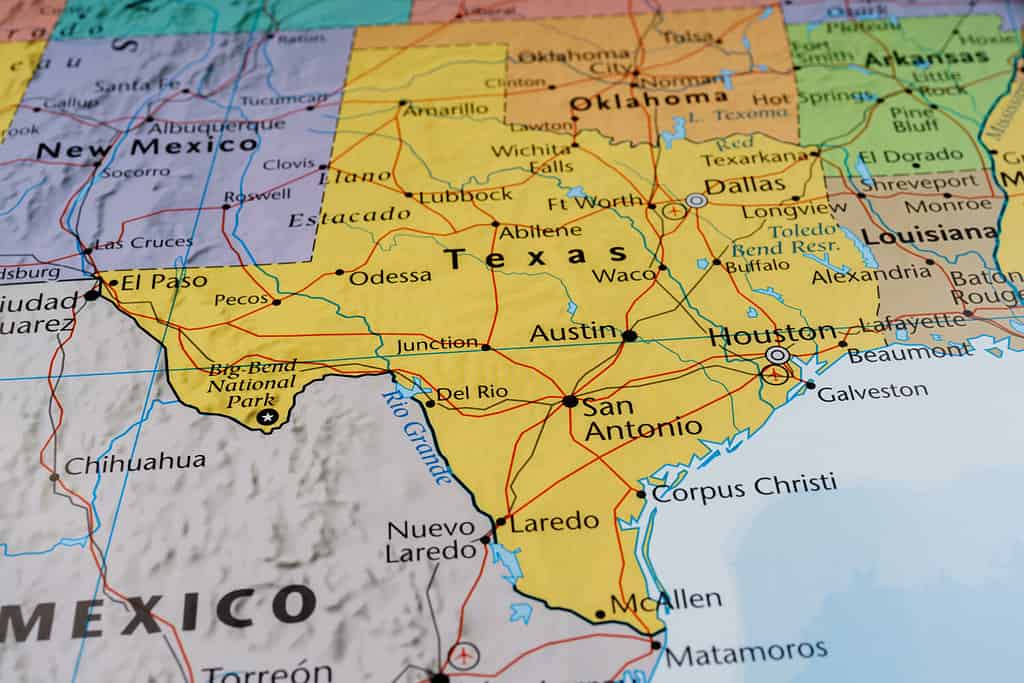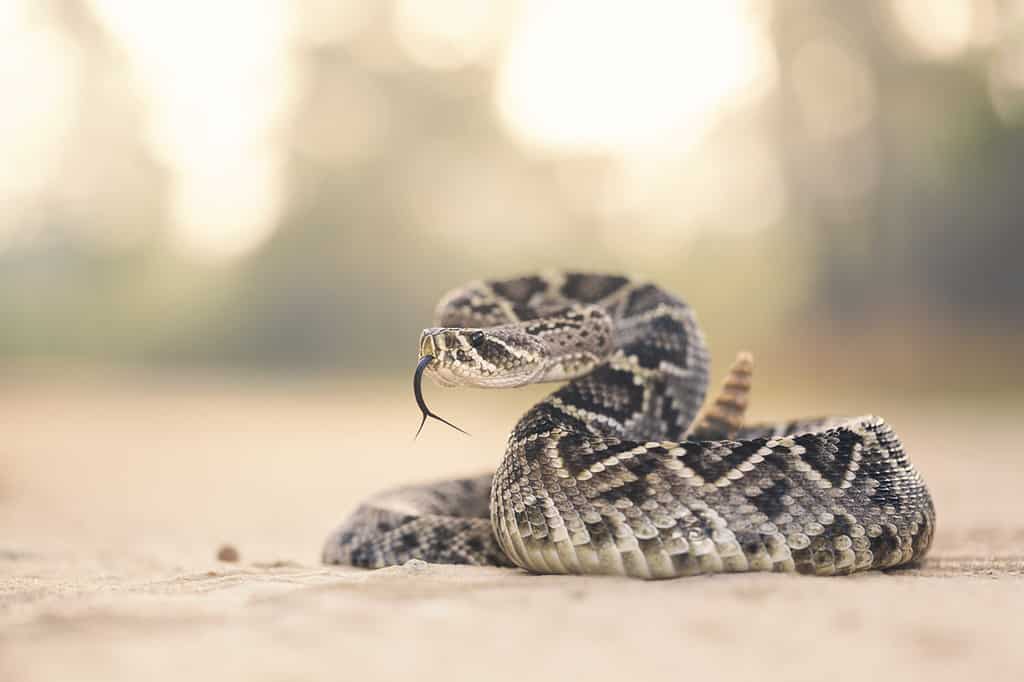Introduction
Did you know that Alabama ranks as the 30th largest state in the country? While it’s not the biggest state, Alabama still has much to offer in terms of wildlife, economic impact, and attractions. In fact, Alabama is home to some 433 bird species, some of which are the rarest on Earth. Thus, it’s clear that this state has some incredible features despite its average size. Discover the total area of Alabama and find out how it compares to states of similar size.

Learn about Alabama’s size and uncover its stunning and fascinating wildlife.
©railway fx/Shutterstock.com
Background on Alabama
Alabama was admitted into the Union in 1819, becoming the 22nd state of the United States of America. Some states that border Alabama include Tennessee, Mississippi, and Georgia. The population of Alabama measures around 5.04 million residents, and the capital of the state is Montgomery.
The climate in this state is considered temperate, marked by an average annual temperature of 64ºF. In addition, northern Alabama experiences an average annual temperature of around 60ºF while the southern portion of the state sees temperature averages close to 67ºF. Furthermore, summers in southern Alabama are characterized by extreme heat with temperatures exceeding 100ºF. Alabama’s average temperature during the summer season measures 79ºF.
On the other hand, winter in Alabama is relatively mild due to its geographical location. For instance, Alabama sees an average winter temperature of 48ºF. In addition, snowfall rarely happens in the southern portion of the state. Northern areas of Alabama may see snow, but snowfall is light and lasts only a day or two during the year.
Alabama averages 56 inches of rainfall annually, and precipitation falls regularly across the entire state. In fact, Alabama seldom experiences drought conditions, and land near the coast receives more rainfall than other regions typically receive. However, the abundance of rainfall in Alabama and its proximity to the Gulf of Mexico can result in natural disasters, such as hurricanes. Storms are common in this state between late summer and early autumn. Storms and hurricanes are most frequent in the southern portion of Alabama while the northern region experiences other types of natural disasters, such as tornadoes.
10 Alabama Facts
- One city in Alabama called Magnolia Springs receives its mail by waterway. A riverboat carries mail to this town, and this mail route is the only one carried out by water in the contiguous United States!
- This state was the first to recognize Christmas as a holiday in 1836.
- Alabama seceded from the Union in 1861 to join the Confederacy in the Civil War, and Montgomery became the first capital of the Confederacy.
- Alabama was originally discovered by Spain, but the French ended up establishing the first settlements in the state.
- The Civil Rights Movement started in this state when Rosa Parks refused to give up her bus seat to a white man in Montgomery.
- The oldest city in Alabama is Mobile, which was founded in 1702.
- The capital of Alabama used to be Cahaba, but the city experienced extreme flooding that left it a ghost town.
- The most extensive collection of African American art is found in Alabama, numbering almost 1,700 paintings.
- Alabama is tied with Mississippi as the most religious state in the country with 77% of people identifying as highly religious.
- The largest motorcycle museum in the world called the Barber Vintage Motorsports Museum is found in this state, located in Birmingham.

Due to its proximity to the Gulf of Mexico, Alabama may experience severe storms and hurricane activity.
©FotoKina/Shutterstock.com
How Big is Alabama by Total Area in Square Miles, Square Kilometers, and Acres?
The total area of Alabama measures 52,420 square miles, which translates to 135,767 square kilometers. In addition, the area of Alabama covers 33.549 million acres. Alabama holds the title of the 30th largest state in America, making it smaller than most other states in the country. Furthermore, around 3.2% of the state is covered by water at 1,773 square miles.
How Big is Alabama by Population?
Alabama’s population numbers 5.04 million residents, as of 2021. Therefore, Alabama ranks #24 out of all 50 states for population, following behind Minnesota and South Carolina. In addition, the most populous cities in this state include Huntsville, Montgomery, Birmingham, and Mobile. However, these cities are small compared to other large cities in the United States, as their populations do not exceed 225,000 residents.
How Big is Alabama by Economic Impact?
Alabama’s Gross Domestic Product (GDP) ranked #27 out of all 50 states in 2021. The GDP of Alabama in 2021 measured 254.110 billion U.S. dollars. By comparison, the state with the greatest economic impact–California–had a GDP measuring 3.373 trillion U.S. dollars in 2021. The lowest GDP measured just 37.104 billion U.S. dollars, and this GDP belonged to the state of Vermont.

Huntsville is Alabama’s largest city with a population of 216,963, as of 2021.
©Sean Pavone/Shutterstock.com
Alabama vs. States of Similar Size: A Comparison
Did you know that Alabama is over 30 times larger than the smallest state in the United States? The smallest U.S. state is Rhode Island, which has a total area covering only 1,545 square miles. On the other hand, Alabama is nearly 13 times smaller than the largest U.S. state–Alaska. The table below shows Alabama compared to nine states of similar size:
| Rank (out of 50 states) | State | Area (square miles) | Area (square kilometers) | Acreage |
|---|---|---|---|---|
| #26 | Iowa | 56,273 | 145,746 | 36,014,720 |
| #27 | New York | 54,555 | 141,297 | 34,915,200 |
| #28 | North Carolina | 53,819 | 139,391 | 34,444,160 |
| #29 | Arkansas | 53,179 | 137,733 | 34,034,560 |
| #30 | Alabama | 52,420 | 135,767 | 33,548,800 |
| #31 | Louisiana | 52,378 | 135,658 | 33,521,920 |
| #32 | Mississippi | 48,432 | 125,438 | 30,996,480 |
| #33 | Pennsylvania | 46,054 | 119,279 | 29,474,560 |
| #34 | Ohio | 44,826 | 116,099 | 28,688,640 |
| #35 | Virginia | 42,775 | 110,787 | 27,376,000 |

Did you know that Texas records a total area five times larger than that of Alabama? Texas holds the title of the largest state in the contiguous United States.
©Alexander Lukatskiy/Shutterstock.com
Wildlife in Alabama
Some mammals found in Alabama include bobcats, raccoons, deer, coyotes, armadillos, and more. Bobcats are a type of cat related to the lynx. The appearance of the bobcat is marked by a light brown or red coloration with black spots or markings. Bobcats have large paws, and the body length of the bobcat ranges between 24 and 40 inches. In addition, bobcats stand around 20 to 24 inches tall and weigh between 15 and 33 pounds. The habitat of these mammals includes deserts or forests, and bobcats typically feed on rabbits, rodents, and birds. One interesting fact about the bobcat is that it is nocturnal, meaning it is most active at night.
In addition, birds that can be encountered in this state are owls, doves, woodpeckers, cardinals, and blue jays, to name a few. Woodpeckers may be found all over the world, and they primarily reside in the treetops. Woodpeckers usually prefer to eat insects but may feed on seeds, berries, and fruit.
Furthermore, various fish species swim in Alabama lakes, rivers, and streams. Some freshwater fish species include channel catfish, bluegill, smallmouth bass, black crappie, and more. Bluegills are a very popular catch among fishermen, and the bluegill is a type of sunfish. These fish range between six and nine inches in length, and they weigh no more than half a pound. In addition, the coloration of most bluegills appears blue or green, and bluegills are most common in the southern and central United States.
Finally, Alabama is home to a variety of reptiles, especially snakes. Snakes in this state include copperheads, coral snakes, rattlesnakes, and cottonmouths. All these snake species are venomous, and a bite from a venomous snake can be particularly threatening to humans. For instance, the eastern diamondback rattlesnake is a venomous snake primarily found in southern Alabama. Eastern diamondbacks release a highly potent venom that is strong enough to kill a human, though venomous snake bites are rare.

The eastern diamondback
rattlesnake
is an extremely venomous snake native to Alabama.
©Kristian Bell/Shutterstock.com
Thank you for reading! Have some feedback for us? Contact the AZ Animals editorial team.








